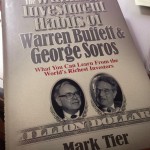Nassim Taleb – The Black Swan
What is a black swan? Nothing extra ordinary if you’ve seen one but if you’ve only seen a white one and suddenly you get to see a black one, you’d be surprised.
Black swan is a term for events that we don’t or can’t anticipate but have a big impact on our lives and reality. To explain it – imagine a market that steadily grows 7% a year but suddenly starts growing 20, 30 or even 40% for a couple of years. It almost defies gravity. Then suddenly plummets all the way to the bottom. Massive losses, people jumping out of windows as they lost everything and have half or even less than what they had. No one saw it coming. Black swan. An unexpected event.
Nassim focuses mainly on markets as financiers are using a bell curve to flatten the massive fluctuations which, however, makes the biggest difference. To help illustrate, Nassim introduced two countries: Mediocristan and Extremistan.
Mediocristan: Let’s say you have 100 people and one is morbidly obese. Even if morbidly obese (4 in 100 probability), it won’t make a dramatic change to the average even when four people weights 160kg out of 100 average ones weighting 70kg. It just won’t throw the average by too much. We also know, that it’s impossible to have a person weighting 5 tons hence the fluctuation will be averaged by the 96 other, average people.
Extremistan on the other hand is an event that has a very low probability 1:1000000 and statisticians say it’ll never happen. Those happen 9 out of 10 times. Like two planes flying into buildings or tsunami over major cities wiping out everything in their way. Very low probability but massive impact.
Black swan event has three properties:
1) Rarity
2) Extreme impact
3) Retrospective predictability
Nassim’s enthusiasm is felt when he talks about bell curve (or Gaussian distribution) and its usage in financial markets. Bell curve is a mathematical method used in investment field to represent asset class returns and their distribution patterns.
The peak is arithmetic average and the further we go each deviation, the lesser probability of markets being there.
Deviation of 1 / -1% – it is accepted that 68% of the returns will fall into it
Deviation of 2 / -2% will fall 95.5% and
To deviation of 3 / -3% will fall 99.7% of all returns.
He is angry at financiers for using the method because this works well for Mediocristan (weight example) but not Extremistan where markets operate and from time to time big rises or massive falls, wiping out billions appear.
Nassim also mentions chance and luck which I strongly disagree with. He makes one specific example about Microsoft with PC having more market share than Apple despite Apple having a better product (book written in 2007). He ascribes this to luck. Microsoft might have worse product, although I beg to differ, but they had a vision of placing a computer into every home around the world. That was their goal and Bill Gates followed it and did everything in his power to achieve it. And he eventually did. Luck has nothing to do with it even though there probably were events he didn’t anticipated and could be considered as luck. He acted upon them and got where he is today. Nassim sees this and agrees with Louis Pasteur saying “Chance favours the prepared mind.” as most inventions were accidental (think discovery of penicillin).
Overall, The Black Swan is a book that will break apart statistics and gives you greater understanding about the topic. Recommended.
Rating 7/10





Leave a Reply
Want to join the discussion?Feel free to contribute!